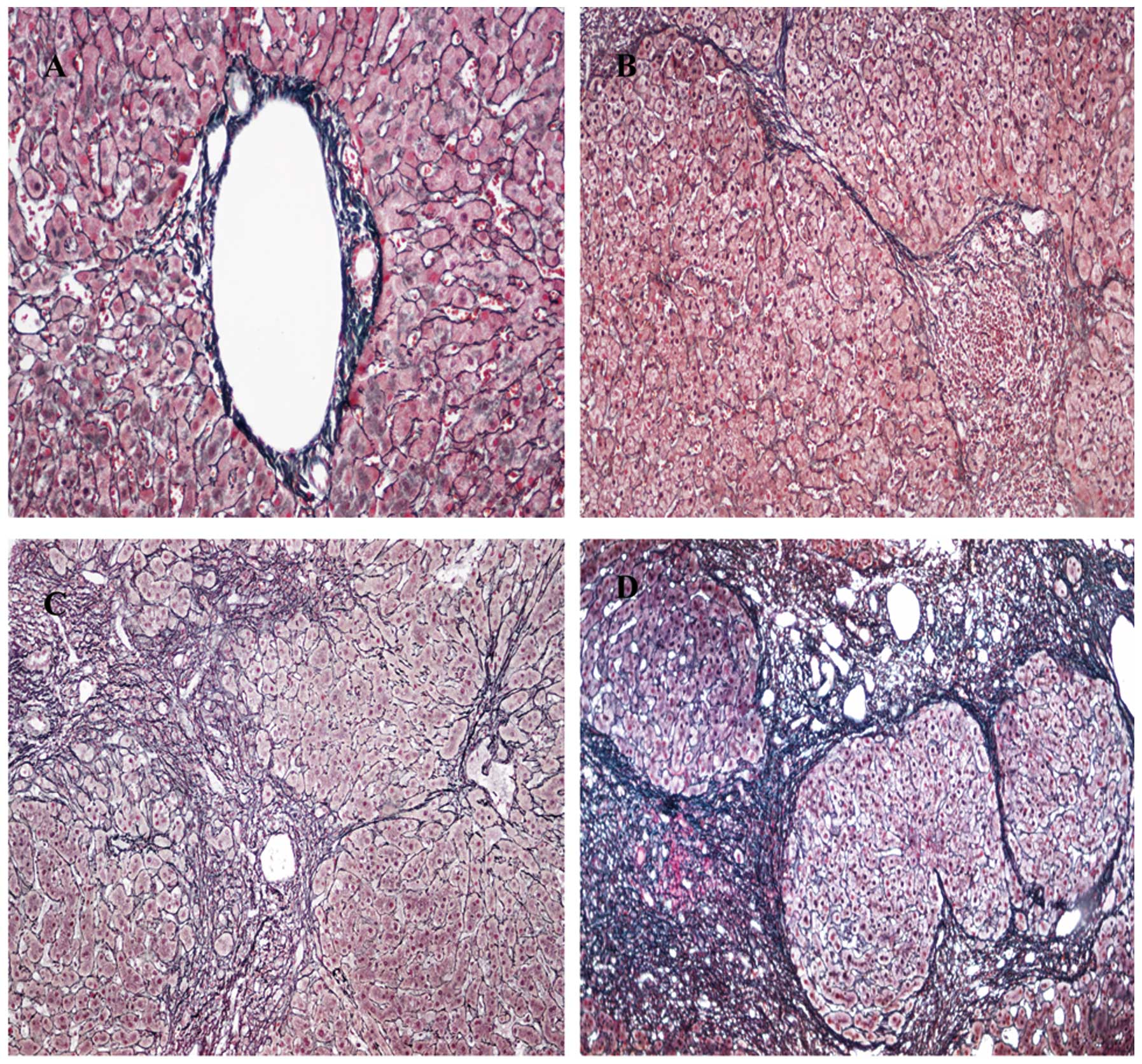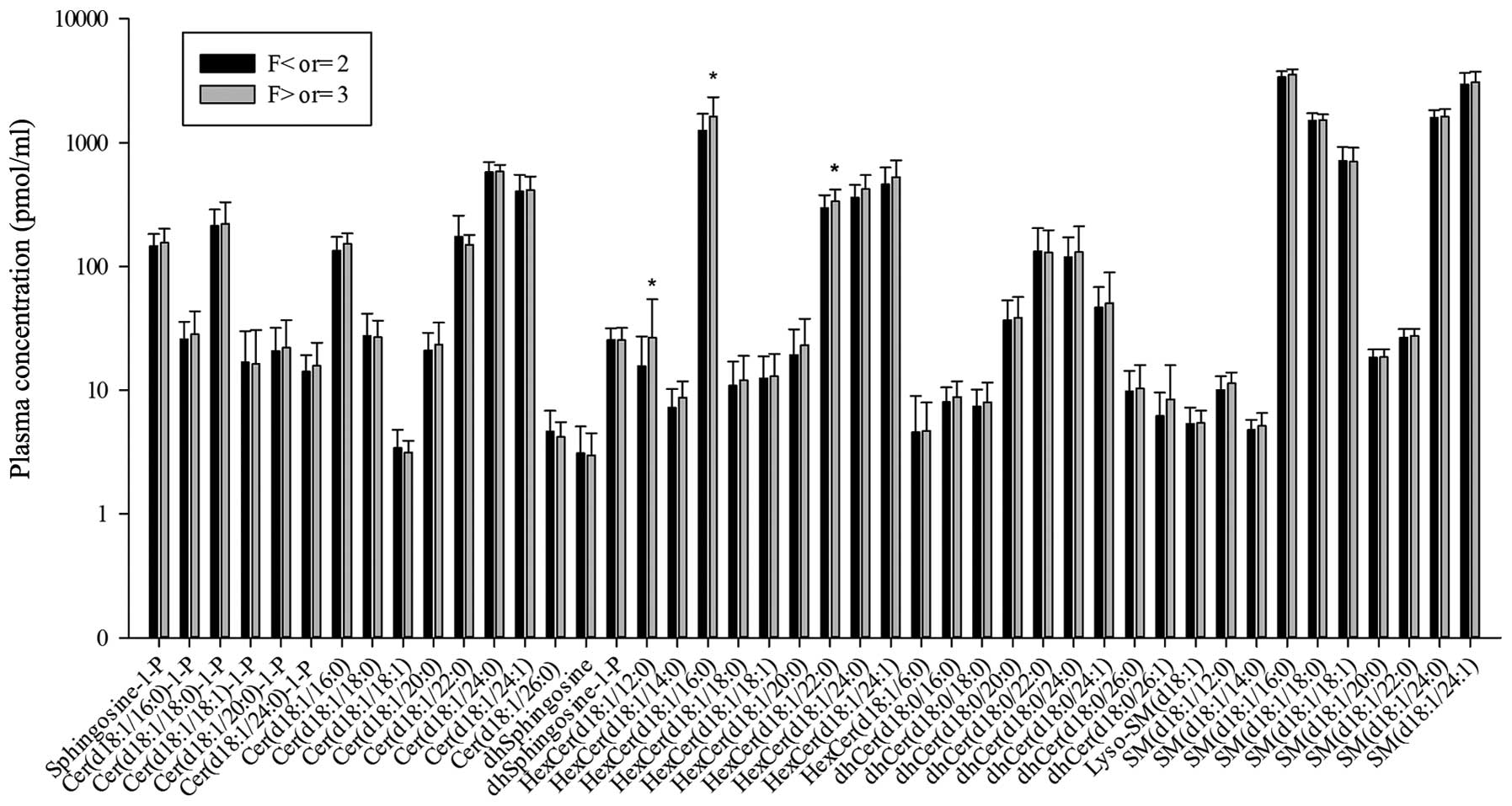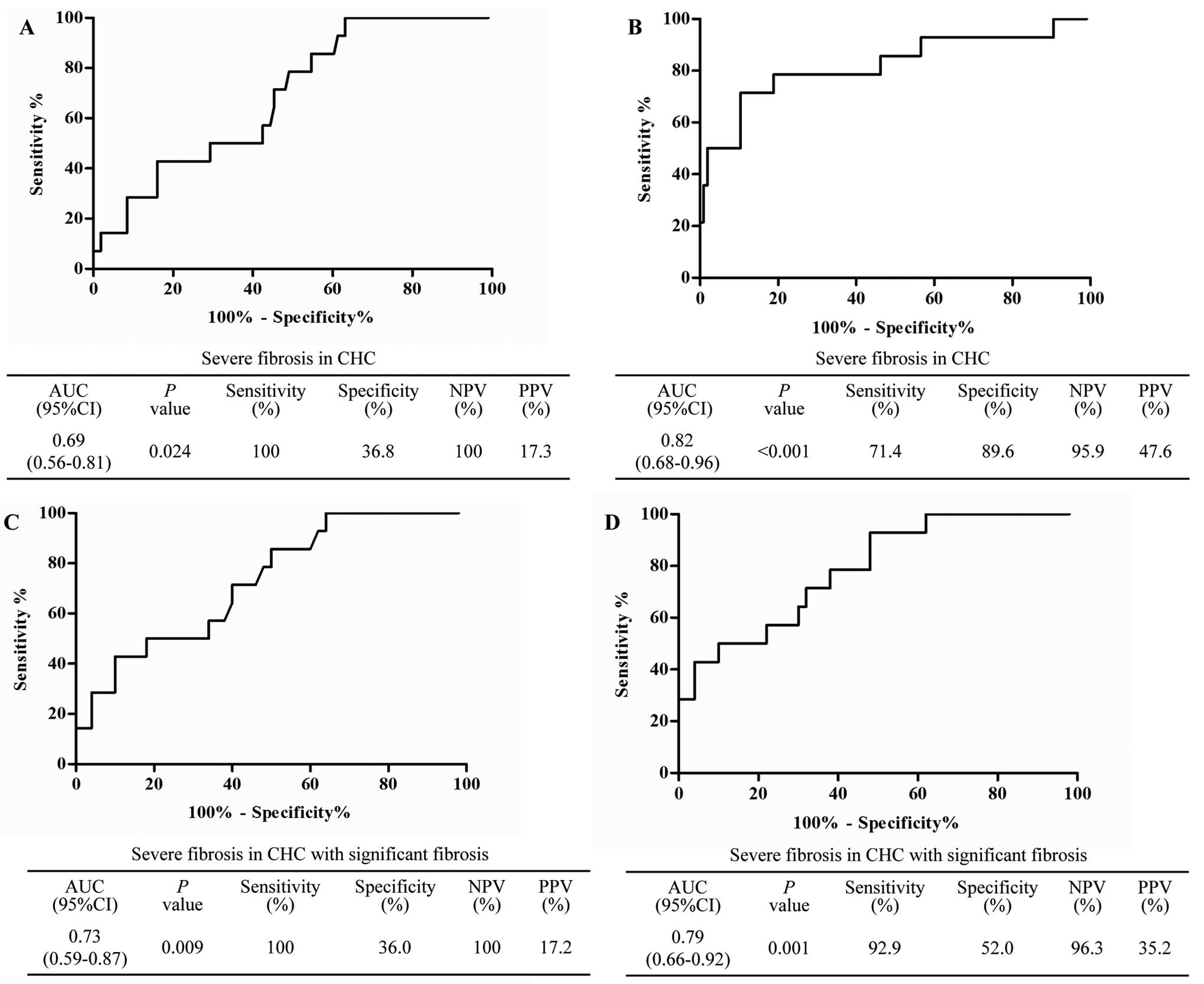Plasma sphingolipids: Potential biomarkers for severe hepatic fibrosis in chronic hepatitis C
- Authors:
- Published online on: February 17, 2015 https://doi.org/10.3892/mmr.2015.3361
- Pages: 323-330
Metrics: Total
Views: 0 (Spandidos Publications: | PMC Statistics: )
Total PDF Downloads: 0 (Spandidos Publications: | PMC Statistics: )
Abstract
The plasma profile of sphingolipids in hepatic fibrosis patients with chronic hepatitis C (CHC) is rarely considered at present. The association between plasma sphingolipids and severe fibrosis in CHC remains an obscure area of research. The aim of the present study was to assess the plasma profile of sphingolipids and to examine the association between plasma sphingolipids and severe fibrosis in CHC, in order to identify potential novel markers of severe fibrosis in CHC. A cohort of 120 treatment‑naïve patients with CHC were included in the present study. Liver biopsies were performed and routine serological indicators were measured. Plasma sphingolipids were detected using high performance liquid chromatography tandem mass spectrometry. A total of 44 plasma sphingolipids were detected. Plasma hexosylceramide (HexCer; d18:1/12:0), HexCer (d18:1/16:0) and HexCer (d18:1/22:0) were shown to be significantly different in patients with CHC between those with and without severe fibrosis (Metavir F ≥3; P<0.05). HexCer (d18:1/12:0) was observed to be closely associated with severe fibrosis in CHC [odds ratio (OR)=1.03] following adjustment for confounding variables in a multivariate analysis. HexCer (d18:1/12:0) had diagnostic value for severe fibrosis in CHC [area under the curve (AUC)=0.69]. In patients with CHC who had developed significant fibrosis (Metavir F ≥2), HexCer (d18:1/12:0) remained closely associated with severe fibrosis (OR=1.08) in this subgroup. In addition, HexCer (d18:1/12:0) had sufficient diagnostic ability (AUC=0.73) to distinguish severe fibrosis in patients with CHC with significant fibrosis. In conclusion, the present study indicated that plasma HexCer (d18:1/12:0) exhibits a close correlation with severe hepatic fibrosis in CHC, particularly in patients who have significant fibrosis. Additionally, HexCer (d18:1/12:0) may be a potential marker of severe hepatic fibrosis in CHC.












